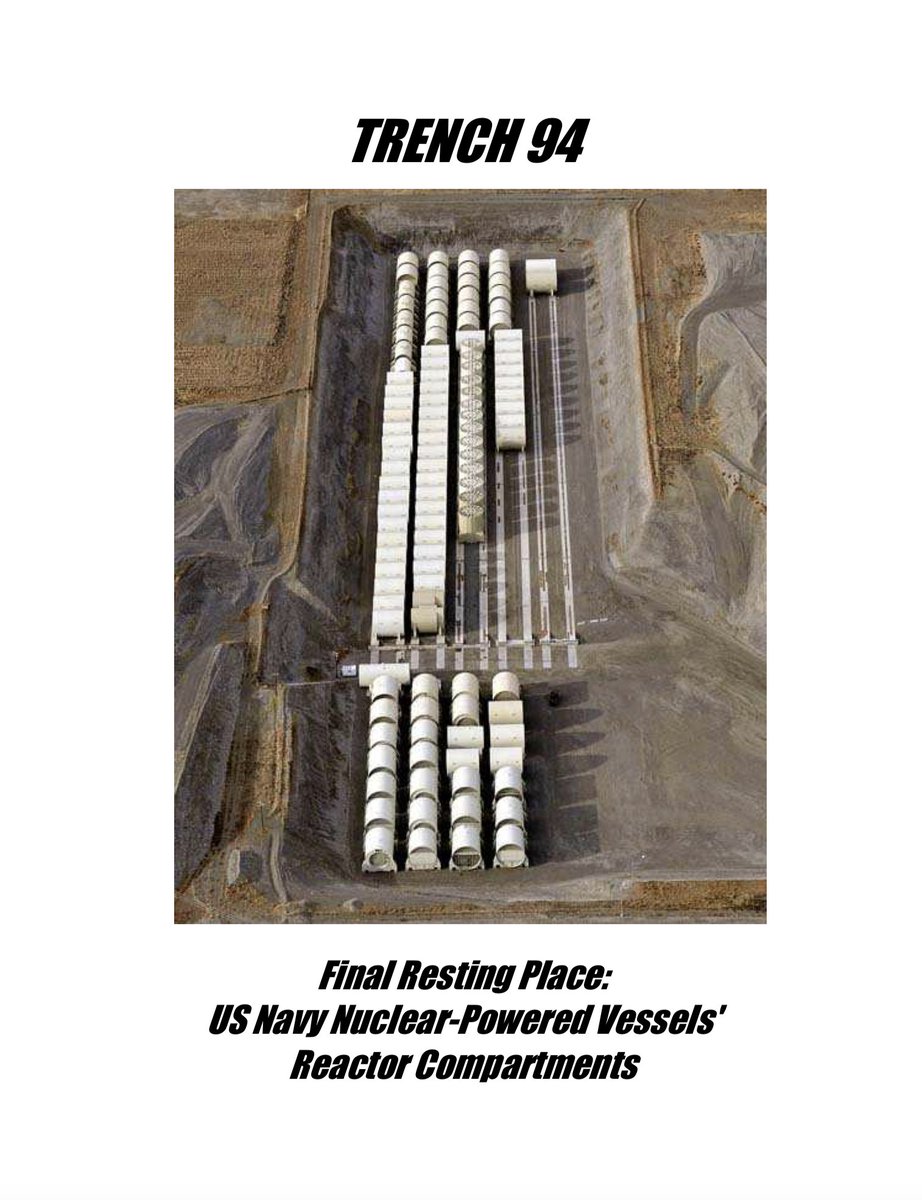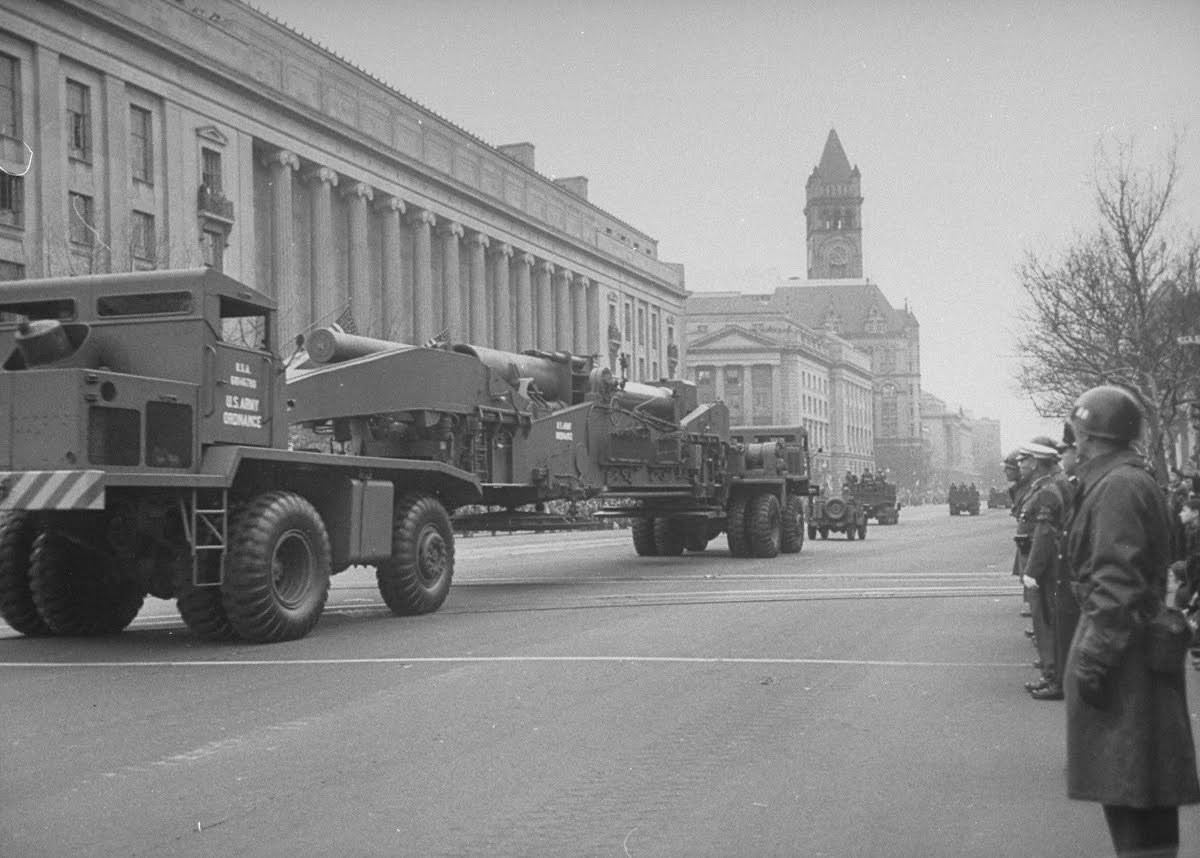
Where do (defueled) US submarine nuclear reactors go to die? Trench 94 in the 218-E-12B burial ground at the Hanford Reservation in Washington State. Once full (>100 reactor compartments), it will be filled with clay and maintained and monitored for decades if not centuries. 

Here's a more recent unannotated photograph showing several dozen additional reactor compartments in the trench. 

And here's a photograph by Robert Del Tredici taken from inside the trench in 1998 which shows the scale of these massive structures: 

For more about Trench 94 and the process of decommissioning nuclear submarines and transporting their defueled reactor compartments to Hanford, see this self-published 2015 essay: explorermagazin.de/boote/trench94… 

• • •
Missing some Tweet in this thread? You can try to
force a refresh




















